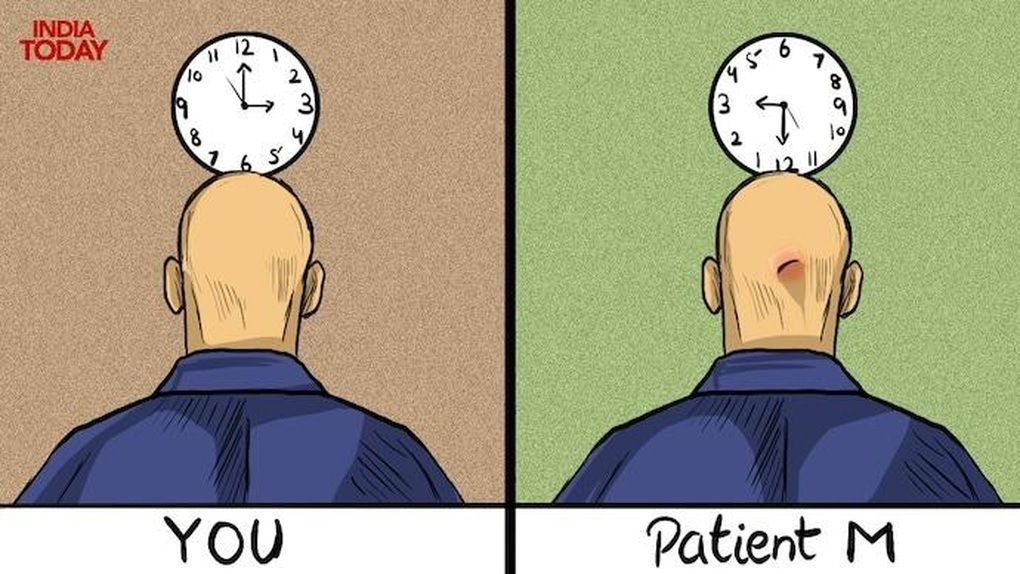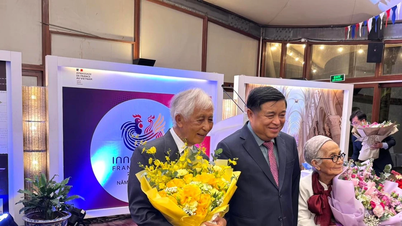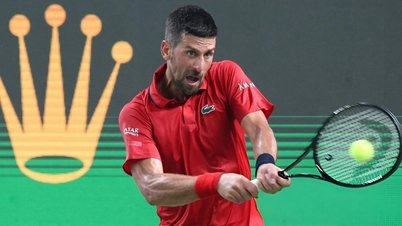A new study published in the journal Neurologia has revealed previously unknown details about "Patient M," the man who saw the world upside down after being shot in the head during the Spanish Civil War in 1938.
This rare case has become the subject of one of the longest-running neurological studies in history, spanning nearly 50 years.
Research conducted by Isabel Gonzalo, daughter of neuroscientist Justo Gonzalo, has shed light on the mysteries surrounding Patient M's condition.
The injury to the parietal region of his brain caused him to see everything upside down: clouds were on the ground, people were floating on the ground. He could only read letters and numbers upside down, and sometimes he was color blind and saw three images instead of one.
However, strangely enough, he could still see the time on his wristwatch normally.

Illustration showing how we see the world and how Patient M sees the world upside down (Photo: Vani Gupta/India Today).
Dr. Justo Gonzalo devoted his life to studying this case, even after Patient M had finished his treatment.
At that time, understanding of the brain was very limited, with the common view being that each brain region was responsible for a specific function.
However, Patient M's complex symptoms challenged this view, leading Dr. Gonzalo to propose the "cerebral dynamics theory."
This theory suggests that cognitive functions are not confined to a single brain region but are distributed and interconnected across many different regions. Therefore, an injury will cause an imbalance between many connected functions throughout the brain.
In Patient M's case, the trauma affected central, peripheral, and paracentral brain regions, resulting in his strange visual experiences.

Dr. Gonzalo persistently studied Patient M from 1938 until his death in 1986, regularly keeping notes and corresponding.
Despite facing a challenging life, Patient M remained optimistic and took care of himself. Unfortunately, he never received any invalid pension, as the Spanish government at that time did not consider seeing the world upside down to be a serious health problem.
To date, no cases with symptoms similar to Patient M have been reported.
Although his true identity remains a mystery, his story has helped shape the field of neurodynamics, expanding our understanding of how the human brain processes information and adapts to injury, demonstrating that the complexity of this organ still has much to explore.
Source: https://dantri.com.vn/khoa-hoc/cau-chuyen-ky-la-cua-nguoi-dan-ong-nhin-the-gioi-nguoc-20250911022333105.htm


![[Photo] Students of Binh Minh Primary School enjoy the full moon festival, receiving the joys of childhood](https://vphoto.vietnam.vn/thumb/1200x675/vietnam/resource/IMAGE/2025/10/3/8cf8abef22fe4471be400a818912cb85)




![[Photo] Prime Minister Pham Minh Chinh chairs meeting to deploy overcoming consequences of storm No. 10](https://vphoto.vietnam.vn/thumb/1200x675/vietnam/resource/IMAGE/2025/10/3/544f420dcc844463898fcbef46247d16)
























































































Comment (0)